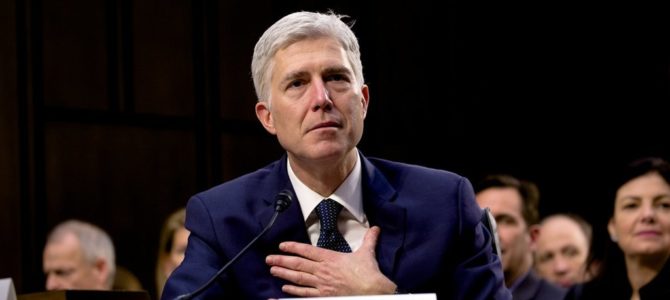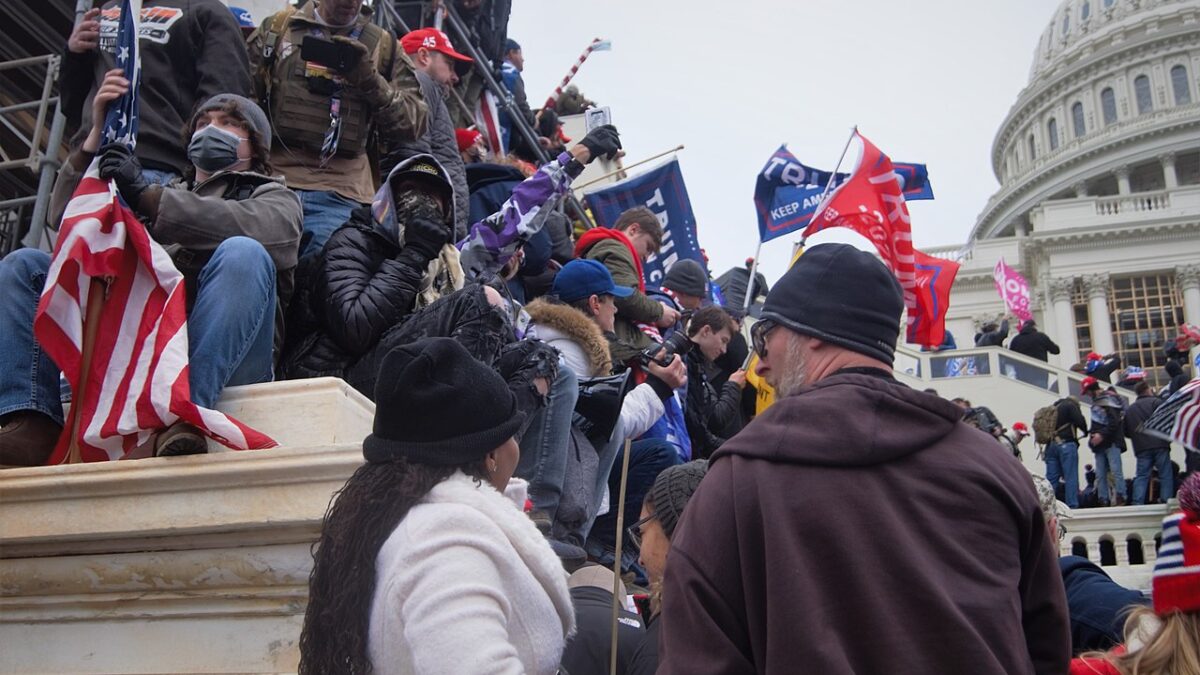
The Supreme Court is on a record slow pace for deciding cases this term, leading to speculation that the justices are having a hard time incorporating their newest colleague, Neil Gorsuch. Of course, the real issue is more likely to be that, after an eight-justice year when the court shied away from particularly difficult issues, the justices have a slew of controversial cases on their hands, ranging from compelled support of unions to compelled baking of wedding cakes, to sports gambling to partisan gerrymandering to the travel ban.
Regardless, we can actually discern quite a bit about the court’s internal dynamic from the lower-profile opinions that come down while we await those big cases. Indeed, it’s often the cases with less political valence where the justices can “nerd out” on legal theories and reveal their jurisprudential minds when they know their decisions won’t make the front pages.
Such was the case where a series of recent decisions teased out differences between justices Gorsuch and Clarence Thomas. In Gorsuch’s first (abbreviated) term, these two were together on all the cases they heard together, leading some observers to wonder whether the new justice was less like the man he replaced, Antonin Scalia, and more like the most court’s most conservative member.
Gorsuch and Thomas actually diverged several times this term—on the early statistics, Gorsuch is closer to Chief Justice John Roberts and Justice Anthony Kennedy, but the last two weeks of April really showed the variance in their approaches. While both are originalists and textualists, with a deep devotion to constitutional text, structure, and history, they sometimes come out differently when the law is unclear. That’s not particularly surprising to anyone who’s been following the relevant legal debates, but it should give pause to anyone who thinks that “originalism” is code for conservative policy results.
First, in Sessions v. Dimaya, Gorsuch provided the deciding vote—joining the liberals, but not their reasoning—to strike down a part of the immigration law that establishes deportable offenses. The statute at issue specified that even a lawful permanent resident must be deported if he commits certain crimes, some that were specifically listed and the rest covered by a general “crime of violence,” defined as “any other offense that is a felony and that, by its nature, involves a substantial risk that physical force against the person or property of another may be used in the course of committing the offense.”
Gorsuch found that catch-all to be unconstitutionally vague, because prosecuting someone under a vague law violates due process. “It leaves the people to guess about what the law demands—and leaves judges to make it up. You cannot discern answers to any of the questions this law begets by resorting to the traditional canons of statutory interpretation.”
Notably, Gorsuch’s concurrence tracked Scalia’s last major opinion, in the 2015 case of Johnson v. United States, where the Supreme Court threw out the “residual clause” of a law that enhanced someone’s sentence based on prior “violent” felonies. (I’m also happy to say that it tracks the dissenting en banc opinion of the judge for whom I clerked, E. Grady Jolly, in the 2016 Fifth Circuit case of United States v. Gonzalez-Longoria.) Gorsuch thus seems to be following in Scalia’s footsteps by expressing skepticism of government power in ways that often redound to the benefit of criminal defendants.
Although Thomas agreed with the outcome in Johnson, he demurred from Scalia’s reasoning, as he did with Gorsuch’s in Dimaya. It was not simply because he doesn’t consider the law to be vague—as the chief justice’s lead dissent argued—but because “I continue to doubt that our practice of striking down statutes as unconstitutionally vague is consistent with the original meaning of the Due Process Clause.”
A week later, in Oil States Energy Services v. Greene’s Energy Group, it was Thomas’s turn to write an opinion from which Gorsuch dissented. This was a separation-of-powers challenge to the Patent Trial and Appeal Board, an administrative-law body housed within the Patent and Trademark Office and vested with the power to cancel patents.
Thomas found that a patent is a “public right”—a grant that wouldn’t exist without legislation—so adjudication by a federal court isn’t constitutionally required. Gorsuch, on the other hand, considered this bit of intellectual property to be a “personal right” that can only be adjudicated by a duly constituted court and not by an offshoot of the executive branch. (Full disclosure: I filed an amicus brief supporting that position.) “As I read the historical record,” he explained, “only courts could hear patent challenges in England at the time of the founding.”
Only Roberts agreed with Gorsuch, while the remaining justices sided with Thomas’s conclusion that, regardless of historical practice, “granting patents is one of the constitutional functions that can be carried out by the executive or legislative departments without judicial determination.”
Finally, the same day as Oil States, the court ruled in Jesner v. Arab Bank that foreign corporations may not be sued under the Alien Tort Statute, which otherwise allows aliens to bring lawsuits in U.S. courts for violations of “the law of nations.” There were five votes for that proposition, but Gorsuch (and Justice Samuel Alito) didn’t join the Kennedy plurality rationale that corporate liability hasn’t been “essential to serve the goals” of the statute.
Gorsuch instead made the point that creating new causes of action should be left to the political branches. “In our democracy the people’s elected representatives make the laws that govern them. . . . The Constitution’s provisions insulating judges from political accountability may promote our ability to render impartial judgments in disputes between the people, but they do nothing to recommend us as policymakers for a large nation.”
Thomas curiously both joined Kennedy in full and wrote a one-paragraph concurrence to note that he also liked Gorsuch’s point (and Alito’s, which was that courts shouldn’t create causes of action that may exacerbate international tensions).
Now, we shouldn’t oversell the differences revealed by these three cases: Thomas and Gorsuch will more often agree with each other than not, and it’s the rare case where Thomas and Kennedy will be arrayed against Gorsuch and Roberts. But in areas as different as criminal procedure and unenumerated rights, there will be disagreement, with Gorsuch pushing back more on federal and state action, both executive and legislative, that impinge liberty.
Conversely, on administrative law—how much deference should judges give executive agencies?—and the proper weight to give precedent (“stare decisis”), we can expect convergence. These are among the areas where Thomas differed most from Scalia, and where Gorsuch will likely be even more “engaged” in reining in government overreach rather than being “restrained” in the traditional conservative mode.









